#tahoka daisy
Text

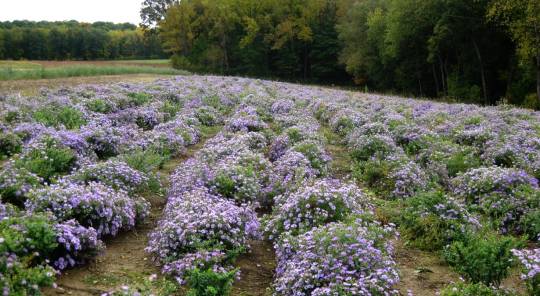

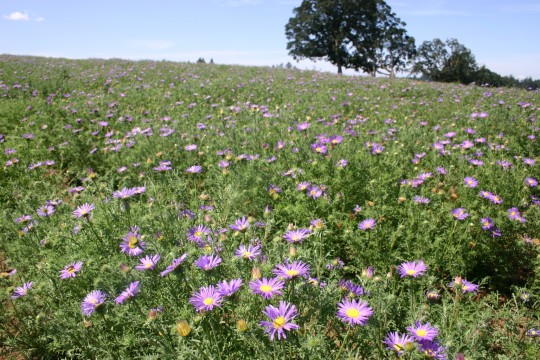


Different names of this flower: Tahoka Daisy, Prairie Aster, Tansy Aster and Machaeranthera Tanacetifolia. (Link)
#prairie aster#tahoka daisy#nature#photography#beautiful#flowers#meadow#field#scenery#landscape#woodland#purple flowers#earth#garden#wild flowers#gardening#view
32 notes
·
View notes
Text

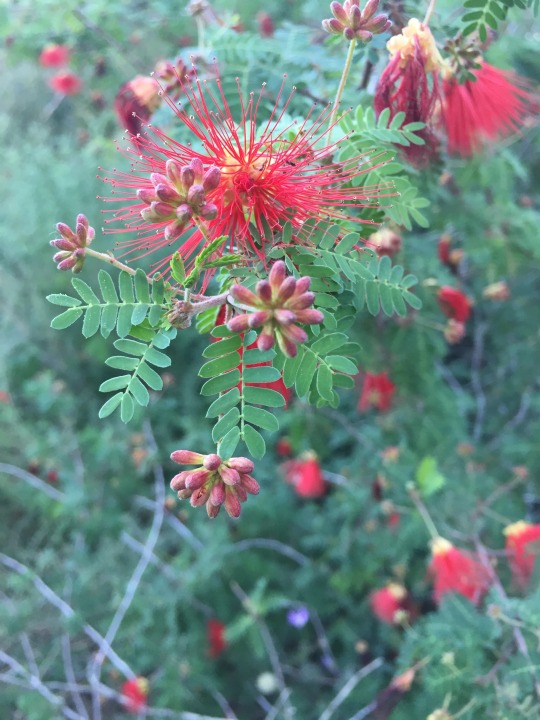
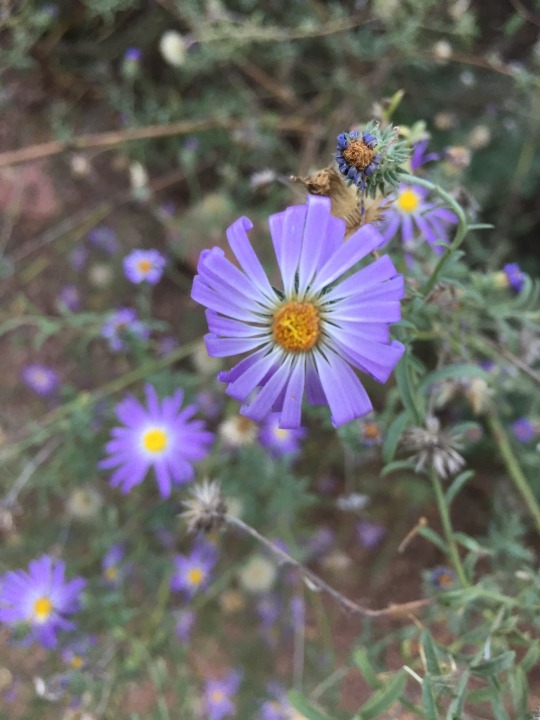


November 9, 2018
Desert Botanical Garden
Phoenix, AZ
#photography#flowers#floral#desert botanical garden#desert#arizona#fairy duster#tahoka daisy#daisy#lantana#west indian lantana
10 notes
·
View notes
Photo

Scenes From My Walk- Orange Sulphur Butterfly on Tahoka Daisy (a kind of aster). #ScenesFromMyWalk #OrangeSulphur #MetallicGreenSweatBee #Butterfly #Bee #Insect #Arthropods #ArthropodsOfInstagrams #ButterfliesOfInstagram (at Santa Fe, New Mexico) https://www.instagram.com/p/CktLIfar_oC/?igshid=NGJjMDIxMWI=
#scenesfrommywalk#orangesulphur#metallicgreensweatbee#butterfly#bee#insect#arthropods#arthropodsofinstagrams#butterfliesofinstagram
0 notes
Photo

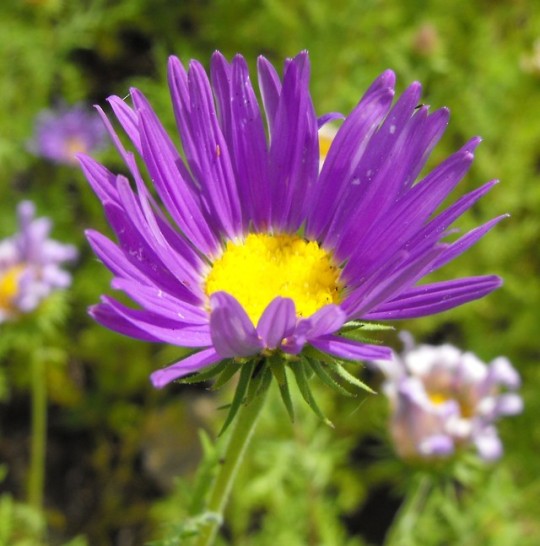
Tansy leaf water or Tahoka daisy (Machaeranthera tanacetifolia) is a species of flowering plant in the aster family.The head has a center of many yellow disc florets and a fringe of many lavender to purple ray florets each 1 to 2 cm (1⁄3 to 2⁄3 in) long.
5 notes
·
View notes
Text
Tansyleaf Tansy-Aster; Tansy Aster; Tahoka Daisy

Scientific Name: Machaeranthera tanacetifolia
Annual or Biennial; 10-28”; full sun or light shade; sandy or rocky soil; drought tolerant
Description: Tansyleaf tansy-aster is an annual or biennial wildflower that is native to northern Mexico, the southwestern U.S., and dry, sandy soils and rocky areas of Colorado, Wyoming and Montana. Its lovely flowers have bright purple petals surrounding a central yellow disc. The Greek word Machaeranthera identifying the genus refers to the flower’s sword-shaped and sharp-pointed anthers (the parts of a flower containing pollen). Its Latin species name tanacetifolia means “fern-like leaves.” Individual leaves are deeply divided into many narrow segments. Their spiny tips make it easy to distinguish tansyleaf tansy-asters from other asters. Mature plants have a bushy appearance.
Tansyleaf tansy-aster’s bright purple flowers make a great addition to the late summer or fall garden. Like other purple asters, it is particularly effective when planted with yellow flowering plants that bloom at the same time, such as yellow asters and other members of the sunflower family, Senecio spp., rabbitbrush and snakeweed.
This beautiful wildflower is also known as Tahoka Daisy, because it was discovered growing near Lake Tahoka, Texas in 1898. Seed packets have been carried by members of the Tahoka Rotary Club to conventions all over the US and overseas. To this day, the City of Tahoka will provide one seed packet without charge when requested by e-mail.
Height: 10- 28”
Spread/Spacing: Plants sprawl up to 3 feet or more when mature.
Exposure: Full sun, light shade
Soil Tolerance: Sandy, gravelly, or rocky soil in dry open areas.
Soil Moisture: Dry to moist, excellent drought tolerance.
Water: Low to medium
Bloom: May - September
Pollinator Value: Butterflies, bees and other insects
Deer & Rabbit Resistance: Resistant to deer because of prickly foliage.
Where they like to grow: Deserts, sandy or rocky plains, dry open areas, well-drained areas in valleys.
Cultivation Notes: Plants are not widely available and are usually started by seed. Seeds can be planted in either spring or fall. They should be scattered directly on the surface and covered lightly (1/16″ of light cover). Keep seeded areas moist until seeds sprout. Seed may be harvested when ripe in the fall and planted where desired. Successive generations of this annual/biennial may sprout in scattered, nearby areas from wind-blown seed.
0 notes
Text
Daisy Flower
Daisies are basic yet modern and are the absolute most lovely blooms in the botanical world. Daisies pass on cheer and richness in spades. As anyone might expect, daisies are well known both for gifting and developing in gardens.
white-daisy2-picture Daisies have a place with the daisy group of Compositae, now known as Asteraceae in blooming plants. Daisies are local to north and focal Europe.
The inception of the word Daisy is the Somewhat English Saxon “daes eage†which truly mean “day’s eyeâ€. It was called this since daisies open at sunrise as the day just starts.
Kingdom
Plantae
Phylum
Anthophyta
Class
Magnoliopsida
Request
Asterales
Family
Asteraceae
Sort
Bellis
A Daisy symbolizes guiltlessness and virtue. It can likewise symbolize fresh starts. The bloom significance of daisy is “loyal loveâ€and “I will never tellâ€.
Some Intriguing Realities about Daisies
A Daisy is an enduring whose evergreen leaves frame a basal tuft or a rosette.
Daisy blossom plant has a prostrate mold or a developing propensity for spreading.
Daisies can be proliferated by division in spring or through sowing seeds in spring or late harvest time.
English Daisy is a genuine weed in the northwest Joined States.
The Daisy blooms open at first light and are gone to by numerous little bugs.
Daisies are utilized by youngsters to make daisy chains.
The Daisy's leaves are palatable and can be utilized as a part of servings of mixed greens.
About the Daisy Plant and Bloom
A Daisy bloom is made out of white petals and a yellow focus, in spite of the fact that the blossom can some of the time have a pink or rose shading.
Daisies are not made of only one blossom. A Daisy is comprised of two sorts of blooms - circle florets and petal-like white beam florets. The plate florets are at the inside and the beam florets are at the fringe yet they are masterminded to give the impression of being a solitary blossom. This course of action on Daisies is a kind of inflorescence known as a capitulum.
The stems of Daisies are smooth and leafless and bolster a solitary blossom. Daisy plants have 3 - 4 inch bloom stalks. The Daisy leaf surface changes and might be smooth or bristly, limit at the base and somewhat lobed. The Daisy bloom stalks are by and large longer than the takes off.
Assortments of Daisies
A portion of the assortments of Daisies are the white Daisy-like blossoms, the Spanish Daisy, Blue Daisy, Lethargic Daisy or Prairie Daisy, African Daisy, Michaelmas Daisy, Swan Waterway Daisy, Tatarian Daisy, Painted Daisy, Paris Daisy, Shasta Daisy, Crown-Daisy, Bull eye Daisy, Nippon Oxeye Daisy, Mammoth Daisy, African Daisy, Kingfisher Daisy, Daylight Daisy, Gerbera Daisy, Transvaal Daisy or Barberton Daisy, Tahoka Daisy, Livingstone Daisy, Gloriosa Daisy, Dahlberg Daisy and Spread Daisy.
Among the Daisy assortments, the Shasta Daisy and African Daisy are the most well known assortments
from our stores - pickupflowers - the bloom master
from the bloom specialists from the blossom specialists from the bloom specialists from the bloom specialists
from the bloom specialists from the blossom specialists
Developing Daisies
Daisies can be become effectively. Daisies are hard perennials.
Daisies are normally developed from seeds. Daisies can be straightforwardly seeded into the flowerbed.
Plant Daisies amid a full sun.
Select a sunny area where they can become undisturbed for quite a long time.
Before planting, include liberal measures of excrement and fertilizer so that the dirt ends up plainly rich and very much depleted.
On the off chance that Daisies are planted in a range which is excessively hot, they ought to be shaded and watered consistently.
Set the plants around 9 to 12 inches separated.
Water the plants routinely amid dry periods.
Include a broadly useful manure in the early development organize, and once every month a while later.
Nurture Daisies
For the most part Daisies are not pestered by bugs and infection.
On the off chance that pestered by bugs and infection, treat Daisies with an insecticidal cleanser or a fungicide.
Just before sprouting, utilize a manure high in phosphorous as it advances huge, brilliant blossoms.
In chilly climate areas, give a thick layer of mulch for winter security.
0 notes
Text
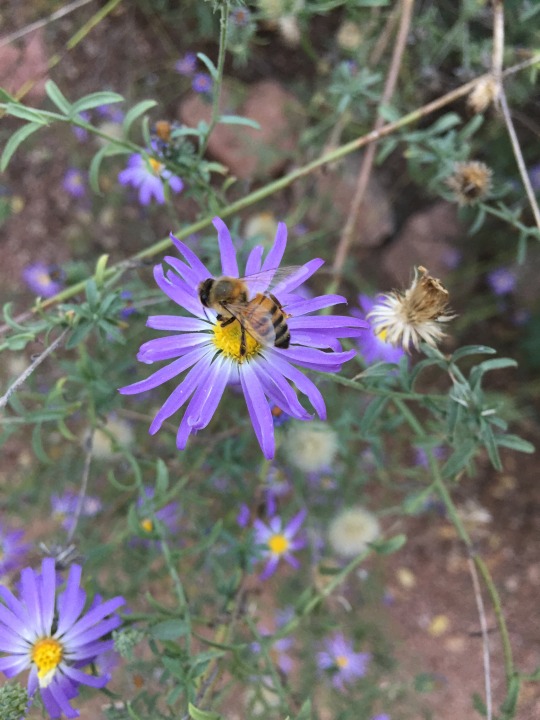
November 9, 2018
Desert Botanical Garden
Phoenix, AZ
#photography#desert botanical garden#desert#flower#flowers#bee#bees#tahoka daisy#daisy#honey bee#honey bees#insect#insects
5 notes
·
View notes
Text

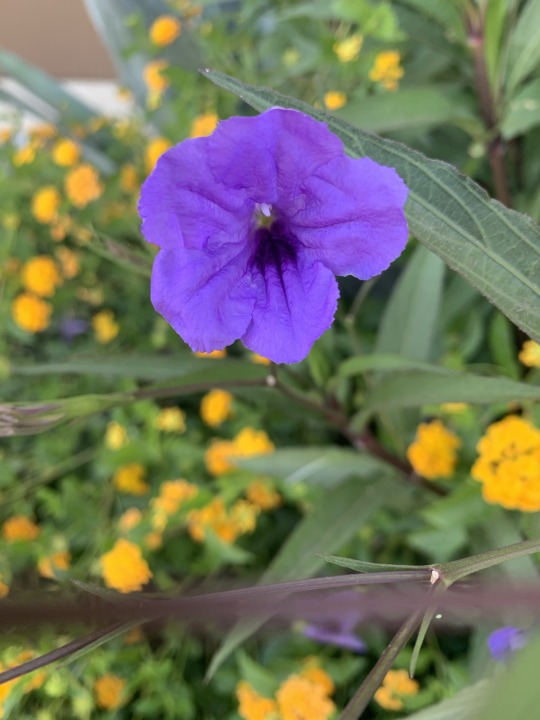
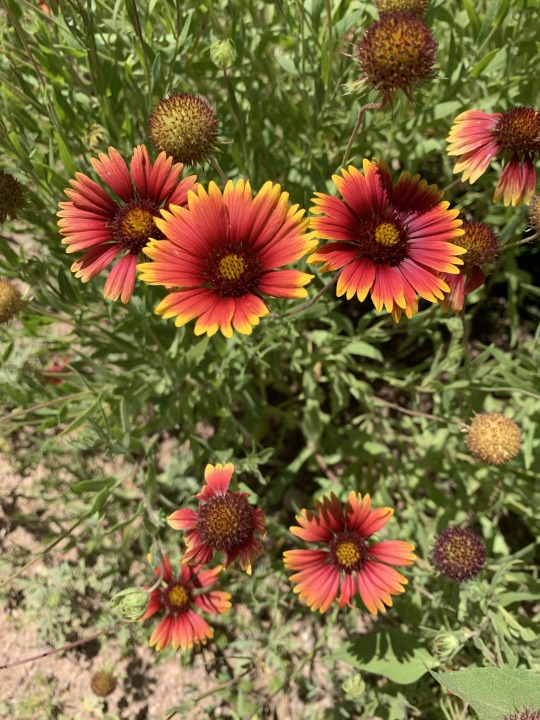
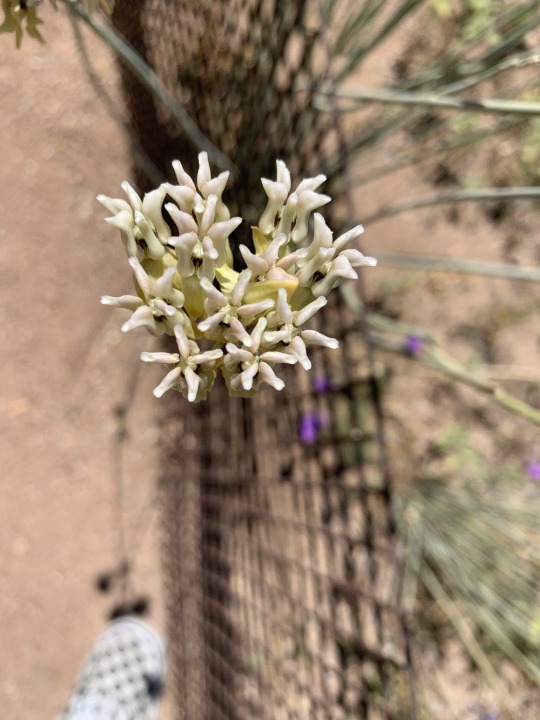

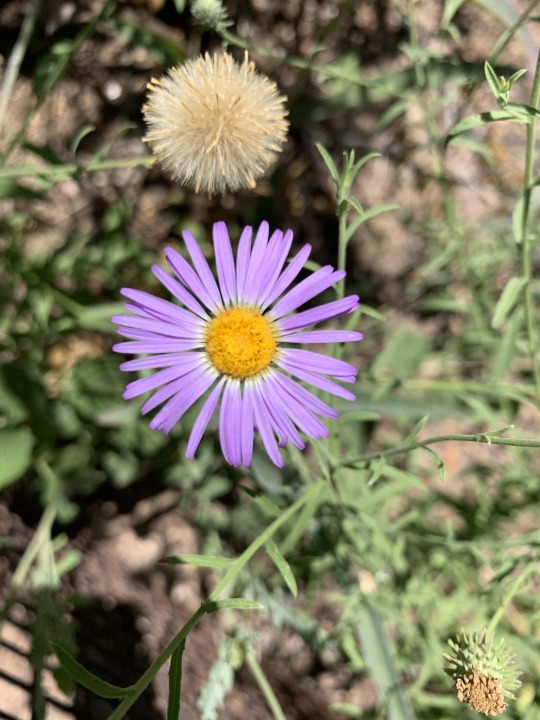
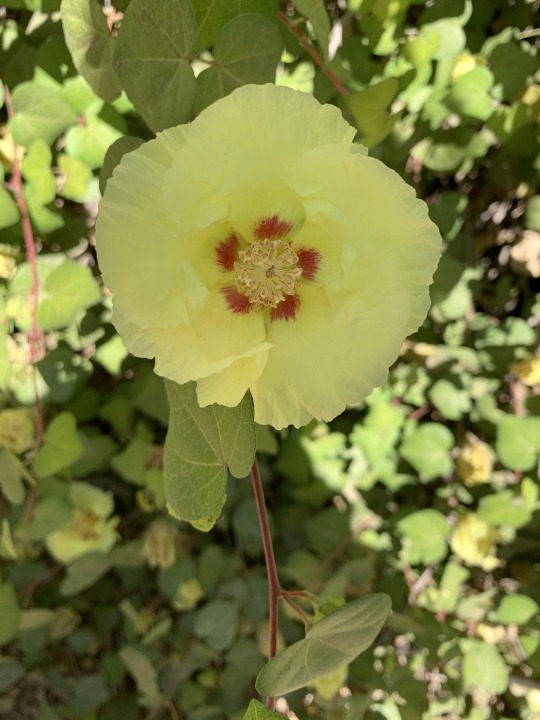
May 23, 2021
Desert Botanical Garden
Phoenix, AZ
#photography#desert botanical garden#flowers#wildflowers#daisy#tahoka daisy#west indian lantana#marigold#petunia#mexican petunia#indian blanket#cotton#cotton flower#milkweed#rush milkweed#spring#springtime
4 notes
·
View notes
Text

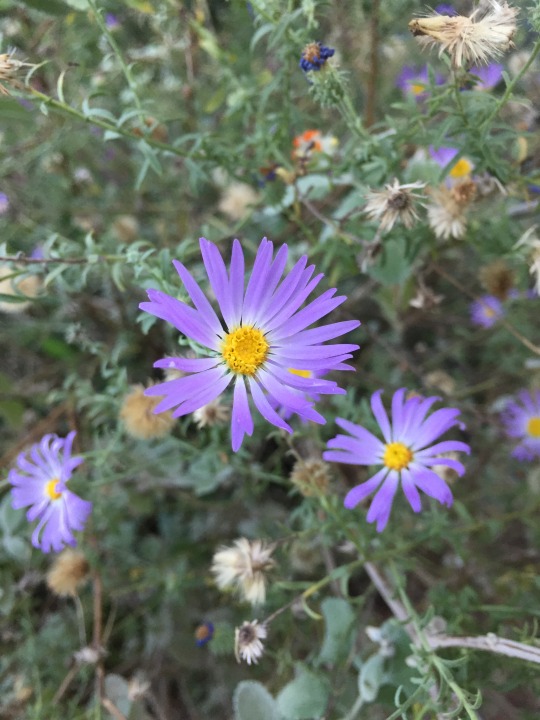
November 9, 2018
Desert Botanical Garden
Phoenix, AZ
2 notes
·
View notes
Photo

Scenes From My Walk- Common Buckeye Buterfly on Tahoka Daisy (a kind of Aster). In the last photo the butterfly is joined by a bee. #ScenesFromMyWalk #CommonBuckeye #CommonBuckeyeButterfly #Butterfly #Insect #Bee #Arthropods #ArthropodsOfInstagram #ButterfliesOfInstagram (at Santa Fe, New Mexico) https://www.instagram.com/p/CkCJbsBPiQZ/?igshid=NGJjMDIxMWI=
#scenesfrommywalk#commonbuckeye#commonbuckeyebutterfly#butterfly#insect#bee#arthropods#arthropodsofinstagram#butterfliesofinstagram
0 notes
Photo
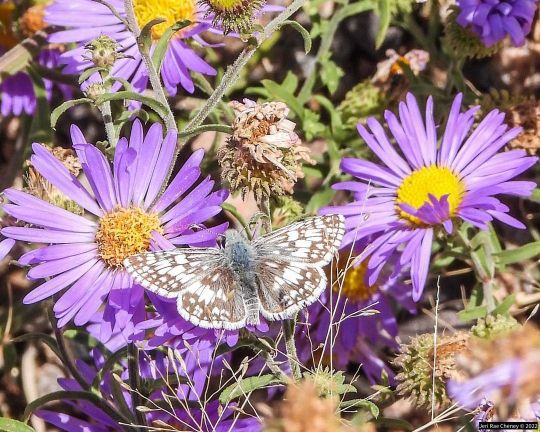
Scenes From My Walk - Common Checkered Skipper Butterfly on Tahoka Daisies a kind of Aster. #ScenesFromMyWalk #CheckeredSkipperButterfly #CommonCheckeredSkipper #Butterfly #Insect #Arthopod #ArthropodsOfNewMexico #Naturalist (at Santa Fe, New Mexico) https://www.instagram.com/p/CjnnrkIO-9m/?igshid=NGJjMDIxMWI=
#scenesfrommywalk#checkeredskipperbutterfly#commoncheckeredskipper#butterfly#insect#arthopod#arthropodsofnewmexico#naturalist
0 notes